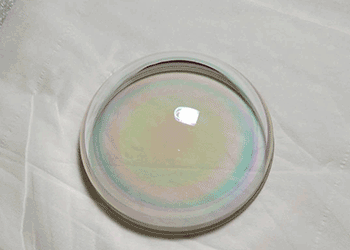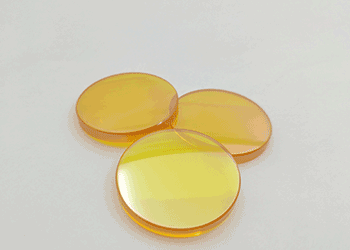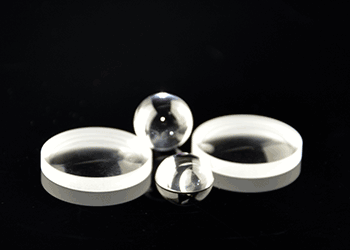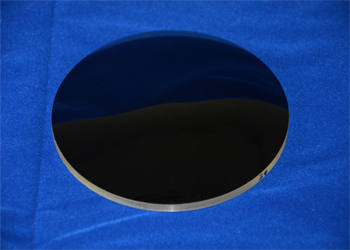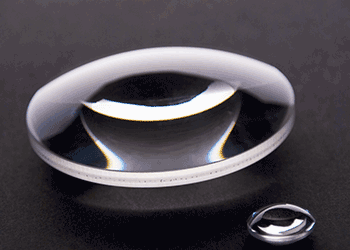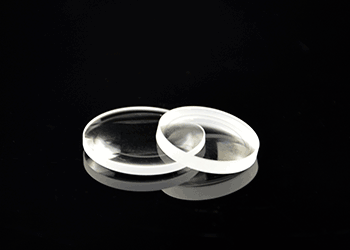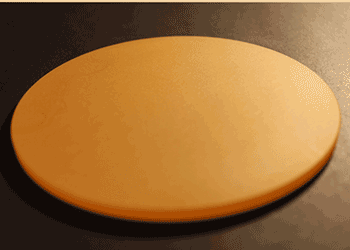Resource
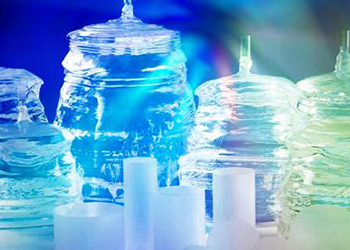
Al2O3 (Sapphire)
Sapphire is used for its extreme toughness and strength. Sapphire is a very useful optical window material for use in the UV, visible, and near infra-red.
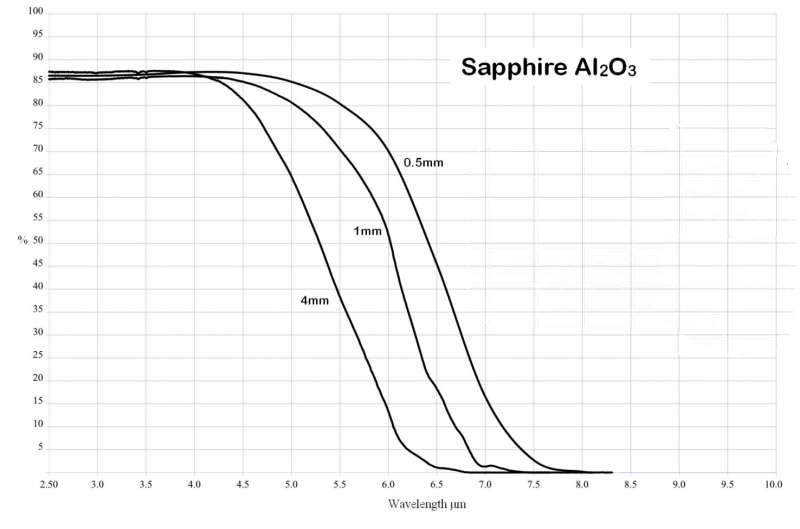
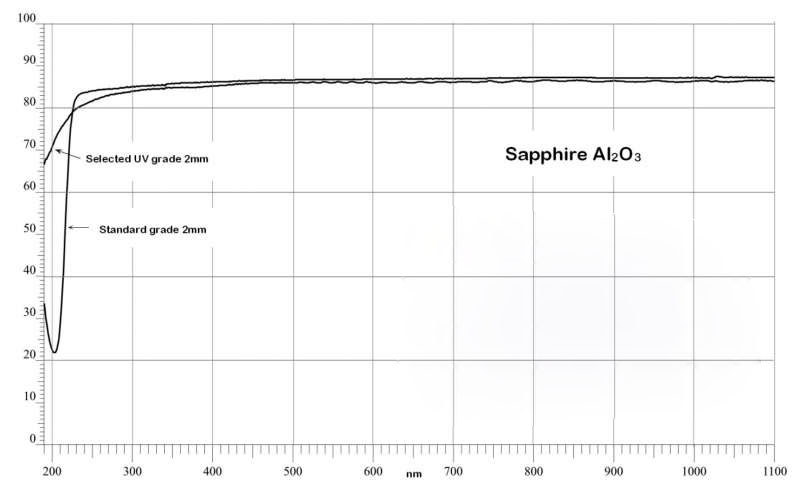
Physical and optical properties
|
Transmission Range
|
0.17 to 5.5 μm
|
|
Refractive Index
|
No 1.75449; Ne 1.74663 at 1.06 μm (1)
|
|
Reflection Loss
|
14% at 1.06 μm
|
|
Absorption Coefficient
|
0.3 x 10-3 cm-1 at 2.4 μm (2)
|
|
Reststrahlen Peak
|
13.5 μm
|
|
dn/dT
|
13.1 x 10-6 at 0.546 μm (3)
|
|
dn/dμ = 0
|
1.5 μm
|
|
Density
|
3.97 g/cc
|
|
Melting Point
|
2040°C
|
|
Thermal Conductivity
|
27.21 W m-1 K-1 at 300K
|
|
Thermal Expansion
|
5.6 (para) & 5.0 (perp) x 10-6/K *
|
|
Hardness
|
Knoop 2000 with 2000g indenter
|
|
Specific Heat Capacity
|
763 J Kg-1 K-1 at 293K (4)
|
|
Dielectric Constant
|
11.5 (para) 9.4 (perp) at 1MHz
|
|
Youngs Modulus (E)
|
335 GPa
|
|
Shear Modulus (G)
|
148.1 GPa
|
|
Bulk Modulus (K)
|
240 GPa
|
|
Elastic Coefficients
|
C11=496 C12=164 C13=115 C33=498 C44=148
|
|
Apparent Elastic Limit
|
300 MPa (45,000 psi)
|
|
Poisson Ratio
|
0.25
|
|
Solubility
|
98 x 10-6 g/100g water
|
|
Molecular Weight
|
101.96
|
|
Class/Structure
|
Trigonal (hex), R3c
|
Refractive Index
No = Ordinary Ray Ne = Extraordinary Ray
|
µm
|
No
|
Ne
|
µm
|
No
|
Ne
|
µm
|
No
|
Ne
|
|
0.193
|
1.9288
|
1.9174
|
0.213
|
1.8890
|
1.8784
|
0.222
|
1.8754
|
1.8650
|
|
0.226
|
1.8702
|
1.8599
|
0.244
|
1.8506
|
1.8407
|
0.248
|
1.8470
|
1.8372
|
|
0.257
|
1.8393
|
1.8297
|
0.266
|
1.8330
|
1.8236
|
0.280
|
1.8244
|
1.8151
|
|
0.308
|
1.8110
|
1.8020
|
0.325
|
1.8047
|
1.7958
|
0.337
|
1.8001
|
1.7921
|
|
0.351
|
1.7969
|
1.7882
|
0.355
|
1.7960
|
1.7883
|
0.442
|
1.7804
|
1.7721
|
|
0.458
|
1.7784
|
1.7702
|
0.488
|
1.7753
|
1.7671
|
0.515
|
1.7730
|
1.7649
|
|
0.532
|
1.7717
|
1.7636
|
0.590
|
1.7680
|
1.7600
|
0.633
|
1.7659
|
1.7579
|
|
0.670
|
1.7643
|
1.7563
|
0.694
|
1.7634
|
1.7554
|
0.755
|
1.7614
|
1.7535
|
|
0.780
|
1.7607
|
1.7527
|
0.800
|
1.7601
|
1.7522
|
0.820
|
1.7596
|
1.7517
|
|
0.980
|
1.7561
|
1.7482
|
1.064
|
1.7545
|
1.7466
|
1.320
|
1.7501
|
1.7423
|
|
1.550
|
1.7462
|
1.7384
|
2.010
|
1.7375
|
1.7297
|
2.249
|
1.7323
|
1.7243
|
|
2.703
|
1.719
|
1.711
|
2.941
|
1.712
|
1.711
|
3.333
|
1.701
|
1.693
|
|
3.704
|
1.687
|
1.679
|
4.000
|
1.674
|
1.666
|
4.348
|
1.658
|
1.65
|
|
4.762
|
1.636
|
1.628
|
5.000
|
1.623
|
1.615
|
5.263
|
1.607
|
1.599
|
Sapphire is grown by a variety of methods. Verneuil and Czochralski methods are usual for standard grade Sapphire material. Higher quality Sapphire, particularly for electronic substrates is manufactured by Kyropulos growth and this can be very pure with excellent UV transmission. Large thin sheets of Sapphire can be made by ribbon growth. Sapphire is slightly birefringent, general purpose IR windows are usually cut in a random way from crystal but for specific applications where the birefringence is an issue, an orientation is selected. Usually this is with the optic axis at 90 degrees to the surface plane and is known as "zero degree" material. Synthetic optical sapphire has no colouration.
* Note that all manufacturers seem to disagree on the actual figures for thermal expansion!



 Download PDF
Download PDF